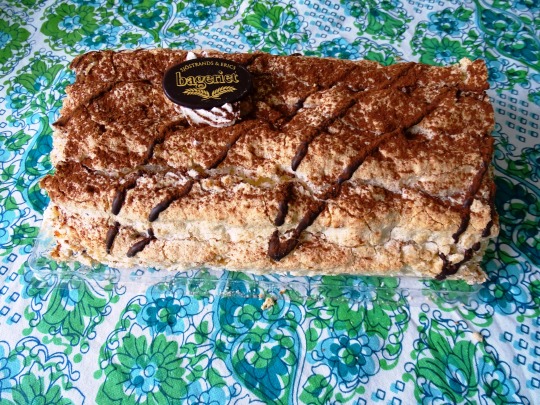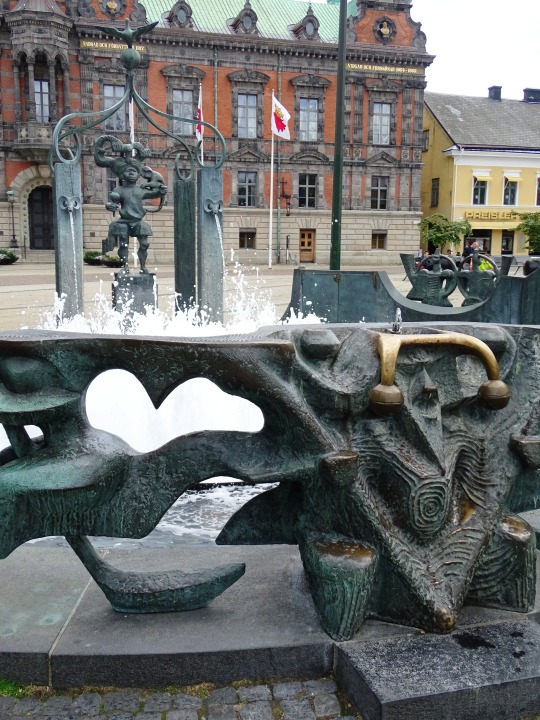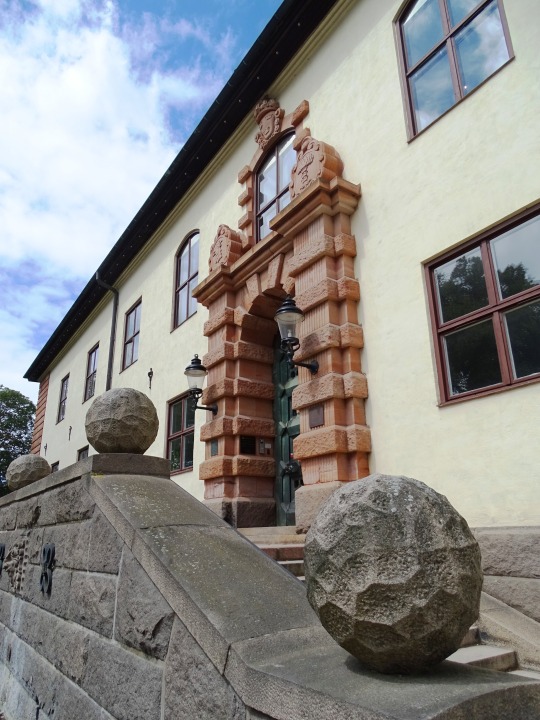#helgo Zettervall
Explore tagged Tumblr posts
Text
Helgo Zettervall, Project for a library of 100.000 volumes (1860).

101 notes
·
View notes
Photo










Old City Hall, Malmö
Malmö Rådhus, the attractive old town hall in Malmö, is located at the east side of the Stortorget, right in the heart of Malmö's old town.
The historical town hall in Malmö was built in 1544–1547, at a time, when Malmö was one of the largest cities in Scandinavia. The two-storey building was the largest town hall which was built in the 16th century.
The town hall received its present, Dutch Renaissance style facade around 1860 in the wake of extensive restoration work. It was attempted to restore the original medieval facade.
The vaulted cellars still look like in the Middle Ages, the ceiling of the upper floors were decorated with elaborate stucco work in the 19th century. The Knut hall was designed like the Hall of Mirrors of the Versailles Palace and is used for special events and balls. On the same floor is also the exclusive Bernadotte room, which is exclusively for royal and diplomatic guests.
Source
#Old City Hall#Old Town Hall#Malmö Rådhus#Stortorget#Helgo Zettervall#Dutch Renaissance style#Torgbrunn#Stig Blomberg#fountain#Malmö#travel#architecture#cityscape#original photography#public art#sculpture#old town#Skåne County#Sverige#Scandinavia#Northern Europe#vacation#summer 2020#tourist attraction#landmark#detail#close up#I really love the first pic#door#window
2 notes
·
View notes
Text
Research 2.3: Architetual Illustration
An architectural illustration is a very vast and complex area, the main point is the representation of buildings and structures. The is a point in architectural illustration and how it informs about where people live, how places develop and change over time. For this, it is not necessary to create detailed work, but more an emotional atmosphere.
Anne Howeson

Culcross Buildings gouache and crayon (Anne Howeson, 2009)
Anne Howeson is an incredible artist. Her uses of light are fascinating. She creates the whole atmosphere for what seems to be a candlelight light. As you look more and more into architectural drawing, it seems a bit repetitive but I think her way to draw, the use of light and the colours make the illustration unusual but at the same time reflect in the quality of the buildings and their surroundings.
1860 by Zettervall, Helgo

Arkitektur- och designcentrum by Zettervall, 1860. Source: archive.org
This is an interesting illustration because of the transactional cut so you can see the inside of a building. This allows us to see the magnificent decoration inside and how the floors connect. This is a more factual and realistic drawing shown with precision the building, but you cannot see the connections with other buildings. The use of the white paper colour for the columns” and the light washes for the inside is also an interesting technique.
Mateusz Urbanowicz

Hokkaido in ink by Mateusz Urbanowicz, 2019
Mateusz is one of my favourite illustrators that have a “Japanese” style. He has been working in Japan for several years. He is better known for his use of watercolour, but I also like his ink work.

Tokyo at Night by Mateusz Urbanowicz, 2019
In Tokyo at night, Mateusz captures how compact the city is, how small and big at the same time the streets are. He tried to represent the landscape as it is but at the same time capture the atmosphere. In this book, the use of light is so important, night drawings are not easy to do but he can bring us to darker and isolated corners in a busy city.
SK arquitecture

@ oleg_skukowski 2019
This is an architecture firm with a lot of illustrations but also completely buildings. This is the modern approach to the 1860 illustration that I added. I saw a lot of similar drawings from different people online and I think there is a trend on how to draw for clients. Both illustrations have things in common, they are drawn in isolation, with no buildings around. The buildings are not integrated with the people or the activities around them. I love markets and in this case, it is pretty clear that is very useful for this purpose.
List of artist websites
Anne Howeson
Mateusz Urbanowicz
SK arquitecture
Bibliography
Howeson, A. (2009). Culcross Buildings gouache and crayon. http://www.annehoweson.com/archive/kx_series01.html.
Urbanowicz, M. (2009). Tokyo at Night. https://mateuszurbanowicz.com/works/tokyo_at_night_book/.
Zettervall, H. (1860). “Sektion 1860 års prisämne, Bibliotek för 100 000 volymer” på Arkivkopia. [online] arkivkopia.se. Available at: https://arkivkopia.se/sak/digmus-ark-ARKM.1965-63-051 [Accessed 26 May 2021].
0 notes
Text
Замок Эгесков
http://zpdlo.com
Замок Эгесков (датск. Egeskov Slot) расположен в южной части острова Фюн в Дании. Памятник северного Ренессанса, построенный в 1554 году. В настоящее время замок является музеем. Замок является прекрасно сохранившихся “замком на воде”. В настоящее время владельцы превратили замок в место проведения уик-ендов и семейных турпоходов. Из-за “Войны баронов” (датск. Grevens fejde) в 1534- 1536 гг. , постоянных бунтов среди населения и гражданской войны, которую в Данию принесла Реформация, большинство датской знати предпочитало жить в укрепленных замках. Одним из подобных замков-жилищ был и Эгесков, построенный на дубовых сваях посреди маленького озера, максимальная глубина которого составляла 5 метров. По легенде для строительства замка пришлось вырубить целый дубовый лес, отсюда и название “Egeskov” - “дубовый лес”.
О замке достоверно известно, что его строительство было закончено в 1554 году. Замок принадлежал Франдсу Брокенхуусу (Frands Brockenhuus). За несколько лет до окончания строительства он женился на Анне Тинхуус (Anne Tinhuus) и получил от своих родителей в наследство земли, на которых и был построен Эгесков. В течение последующих почти 400 лет замок переходил из рук в руки различных владельцев и прожил эти годы без особых потрясений. В 1784 году Эгесков был продан Хенрику Бийе (Henrik Bille), чьи потомки владеют замком по сей день. В 1883 Julius Ahlefeldt-Laurvig-Bille стал владельцем замка. Он приг��асил шведского архитектора Helgo Zettervall, который взял на себя работы по восстановлению. При нем также была увеличена высота башен, восстановлены ступенчатые фронтоны и построены ворота, через которые сегодня в замок попадают все посетители. На этом владелец не остановился и заодно превратил замок в современное на тот период поместье: построил молочную ферму, электростанцию и провел железную дорогу до города Kvrndrup. Все это заложило базис для процветания з��мка сегодня.
0 notes
Photo

(181/365) Kungshuset (the King's House) at Lundagård, being all red on a gray morning. First built by Diiriik Byggmästare in the 1580ies, as a place for the Danish king to live when he was in Lund. (Scania was Danish at the time.) Rebuilt, expanded and renovated in the 1880ies by Helgo Zettervall, famous Swedish architect, known for his "drastic restorations" (Wikipedia) of churches and other medieval buildings.
1 note
·
View note
Photo

Every respectable building should have a sphinx on the roof. Lund University Main Building (architect Helgo Zettervall, 1882)
15 notes
·
View notes
Photo

In Line
What do you think about my pic?
#Malmö Rådhus#Malmo Town Hall#Helgo Zettervall#Kompanigatan 5#Sweden#Stortorget#fountain#public art#architecture#cityscape#Malmö#Scandinavia#Northern Europe#flag#landmark#tourist attraction#Scania#Öresund region#photo of the day#What do you think about my pic?#original photography#summer 2020#vacation#travel#sculpture
4 notes
·
View notes
Photo










Food in Malmö
In 1914 (15 May to 4 October) Malmö hosted the Baltic Exhibition. The large park Pildammsparken was arranged and planted for this large event. The Russian part of the exhibition was never taken down, owing to the outbreak of World War I.
On 18 and 19 December 1914, the Three Kings Meeting was held in Malmö. After a somewhat infected period (1905–1914), which included the dissolution of the Swedish-Norwegian Union, King Oscar II was replaced with King Håkon VII in Norway, who was the younger brother of the Danish King Christian X. As Oscar died in 1907, and his son Gustav V became the new King of Sweden, the tensions within Scandinavia were still unclear, but during this historical meeting, the Scandinavian Kings found internal understanding, as well as a common line about remaining neutral in the ongoing war.
Within sports, Malmö has mostly been associated with football. IFK Malmö participated in the first ever edition of Allsvenskan 1924/25, but from the mid-1940s Malmö FF started to rise, and ever since it has been one of the most prominent clubs within Swedish football. They have won Allsvenskan 23 times in all (as of February 2018) between 1943/44 and 2017.
By 1971, Malmö reached 265,000 inhabitants, but this was the peak which would stand for more than 30 years.(Svedala was, for a few years in the early 1970s, a part of Malmö municipality.)
By the mid-1970s Sweden experienced a recession that hit the industrial sector especially hard; shipyards and manufacturing industries suffered, which led to high unemployment in many cities of Skåne. Kockums shipyard had become a symbol of Malmö as its largest employer and, when shipbuilding ceased in 1986, confidence in the future of Malmö plummeted among politicians and the public. In addition, many middle-class families moved into one-family houses in surrounding municipalities such as Vellinge Municipality, Lomma Municipality and Staffanstorp Municipality, which profiled themselves as the suburbs of the upper-middle class. By 1985, Malmö had lost 35,000 inhabitants and was down to 229,000.
The Swedish financial crises of the early 1990s exacerbated Malmö's decline as an industrial city; between 1990 and 1995 Malmö lost about 27,000 jobs and its economy was seriously strained. However, from 1994 under the leadership of the then mayor Ilmar Reepalu, the city of Malmö started to create a new economy as a center of culture and knowledge. Malmö reached bottom in 1995, but that same year marked the commencement of the massive Öresund Bridge road, railway and tunnel project, connecting it to Copenhagen and to the rail lines of Europe. The new Malmö University opened in 1998 on Kockums' former dockside. Further redevelopment of the now disused south-western harbor followed; a city architecture exposition (Bo01) was held in the area in 2001, and its buildings and villas form the core of a new city district. Designed with attractive waterfront vistas, it was intended to be and has been successful in attracting the urban middle-class.
Since 1974, the Kockums Crane had been a landmark in Malmö and a symbol of the city's manufacturing industry, but in 2002 it was disassembled and moved to South Korea. In 2005, Malmö gained a new landmark with completion of Turning Torso, the tallest skyscraper in Scandinavia. Although the transformation from a city with its economic base in manufacturing has returned growth to Malmö, the new types of jobs have largely benefited the middle and upper classes.
In its 2015 and 2017 reports, Police in Sweden placed the Rosengård and the Södra Sofielund/Seved district in the most severe category of urban areas with high crime rates.
Source: Wikipedia
#Warrior Burger#Malmö Rådhus#city hall#town hall#architecture#Torgbrunn#fountain#public art#travel#vacation#original photography#Stig Blomberg#Helgo Zettervall#Budapest Roll#Malmö Castle#Hight Court#Hotel Anglais#Flensburg House#Sweden#Malmö#Sverige#Scandinavia#cityscape#restaurant#food#fries#dessert#Northern Europe#summer 2020#Southwest Jalapeño Burger
1 note
·
View note
Photo

Sphinxes on the roof of Helgo Zettervall's building (photo: Kennet Ruona)
64 notes
·
View notes